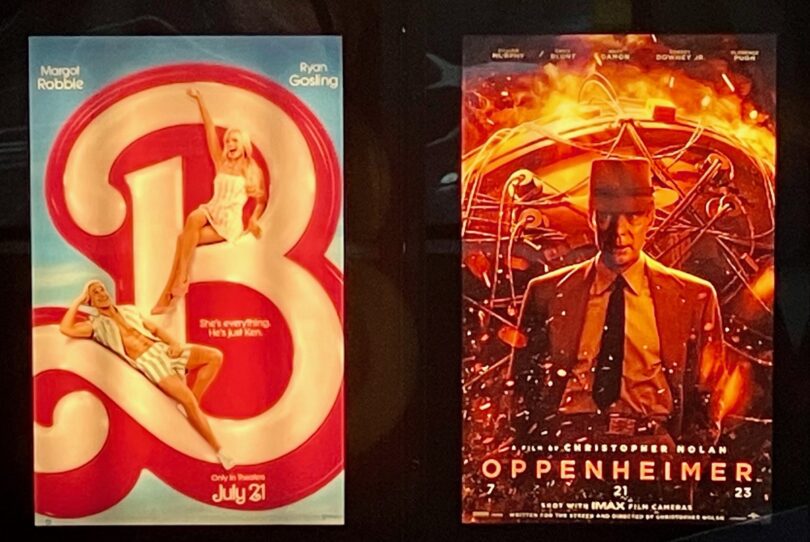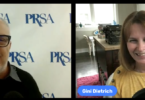As Labor Day approaches and summer winds down, PR professionals can learn from the marketing phenomenon that exploded from the season’s two biggest movies: “Barbie” and “Oppenheimer.” The two films — one a bright, uplifting tale of a doll come to life, the other a dark drama about “the father of the atomic bomb” — were both released on July 21, which led moviegoers to coin the term “Barbenheimer.”
Even before its release, “Barbie” began taking over our newsfeeds with reports about clever marketing strategies and partnerships to promote the blockbuster movie. Consumers were amused by promotions such as Burger King’s Barbie burger with pink sauce, and the Barbies and Kens who started popping up on the Bumble dating app.
Then, user-generated “Barbenheimer” memes, which combined images from both films, went viral on social media, sparking the idea that people could see the movies back-to-back on the same day. From there, the cultural moment of “Barbenheimer” was born.
No one saw this opportunity for cross-promotion coming. Two industry competitors started out trying to attract audiences whose tastes in movies could not have appeared more different. The competition of a blockbuster dual debut day got flipped entirely on its head to instead create a collaboration that further extended consumer anticipation and excitement, resulting in billions of dollars in combined ticket sales.
When the “Barbie” and “Oppenheimer” teams joined the conversation, it only catalyzed the cultural buzz surrounding the moment.
“It’s a perfect double bill,” said “Barbie” star Margot Robbie at the movie’s London premiere. “I think actually start your day with “Barbie,” then go straight into “Oppenheimer” and then a “Barbie” chaser,” the Associated Press quoted her as saying.
At the London premiere of “Oppenheimer,” Cillian Murphy, who plays the physicist J. Robert Oppenheimer in the movie, told the AP that “of course” he planned to see “Barbie.”
The success of “Barbenheimer” can inspire communicators to find new and creative approaches to brand partnerships and cross-promotions. What if, instead of battling the competition, communicators work with them?
Choose cross-promotions carefully.
While an informal cross-promotion made sense for “Barbie” and “Oppenheimer,” it’s important to consider when and where a similar strategy might work between other competitors. In some industries, such as entertainment or food and beverage, consumers are aficionados whose love for the industry has enough space to hold more than one favorable brand. It could make sense for two of these brands to team up for a collaborative product that speaks to their shared audience of snackaholics, inherently resulting in dual success.
In industries such as insurance or banking, consumers typically have just one provider or preferred vendor, so it probably wouldn’t work for two competitors to team up.
In the case of “Barbenheimer,” the overt irony of their unlikely pairing helped fuel the success of both films. If the “Barbie” and “Oppenheimer” teams had not joined the conversation, “Barbenheimer” likely would not have been the mass cultural moment that it has become.
Because the “Barbie” and “Oppenheimer” camps were willing to promote each other, the films themselves permitted their respective fans to converge rather than to split and have to choose one movie over the other. The distinct audiences of both films seemed to acknowledge and embrace one another.
Consider the risk.
Before green-lighting the cross-promotion, the “Barbie” team at Warner Bros. and the “Oppenheimer” team at Universal likely had separate discussions about the risks involved — including the possibility of blockbuster overload for consumers. If the risk had been too great for either film, then “Barbenheimer” might have ceased to exist.
PR practitioners also need to consider the element of risk when contemplating a cross-promotion with another brand. There must be an analysis surrounding the risks involved in engaging with a competitor, which could inadvertently lead consumers to the competitor’s brand.
“Barbenheimer” was a well-deserved cultural moment that won’t be easily replicated, but massive, attention-grabbing instances like these can be learning moments for public relations practitioners. Advising brands to consider teaming up with their competition is bold, but can pay off for all when done right. However, there’s no debate that the lesson of “Barbenheimer” will continue long after the theater lights have been turned off.
Laura Emanuel, APR, is the managing director of Red Thread PR, a PR specialty shop part of Brownstein Group’s agency network. Emanuel manages the company with a simple belief: the most effective brands look at where the authenticity of earned media will pay dividends and then look at how social platforms, influencer partnerships and paid editorial will amplify the earned media activities. Connect with her on LinkedIn.
[Photo credit: john elsasser]







This article explains why the cross-promotion between Barbie and Oppenheimer was so successful. The strategies for both movies were different, but both utilized unique marketing strategies and partnerships that got consumers excited. I enjoyed reading about how “Barbenheimer” fans played a vital role in the promotion of these films. Public relations professionals have a lot to learn from this blockbuster phenomenon and I’m looking forward to sharing this with my colleagues at Platform Magazine!- Jillian Middleton, writer/editor for Platform Magazine